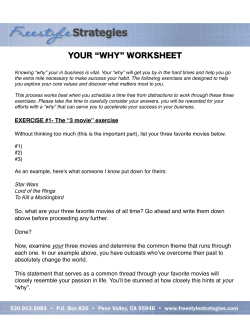
N A C P
NONOPERATIVE ADHESIVE CAPSULITIS PROTOCOL This protocol has been designed as a guideline for treatment progression of adhesive capsulitis. This protocol may be progressed as tolerated per patient’s response to treatment. Adhesive capsulitis progresses through three phases: 1.) A painful phase, where the motion is near normal, but the patient has constant pain at rest (approximately 3 months in duration). 2.) A freezing phase, where pain continues but the patient begins to loose active and passive range of motion (approximately 3 months in duration). Motion loss begins with internal rotation, followed by external rotation and abduction, followed by forward elevation. 3.) A thawing phase, where the pain at rest resolves and motion returns. Motion return begins with forward elevation, then external rotation, and lastly internal rotation. In general, range of motion exercises are ineffective and painful if the patient is in the painful or freezing phase of this disease. For most patients you should wait until the patient’s pain at rest is resolving or they begin to see spontaneous improvement in forward elevation before beginning aggressive stretching exercises. 1. Modalities Utilized as necessary for pain, inflammation and joint stiffness. 2. Mobilizations Glenohumeral, Sternoclavicular, scapulothoracic joint mobilization as necessary. 3. Flexibility/ROM See above italics. Manual stretching; assisted ROM using pulleys, cane, towel, Air dyne, UBE, Versa Climber, finger ladder, Plyoball exercise, body weight exercises. Expect to see forward elevation return first, then external rotation, then internal rotation. End range stretching should follow this sequence. 4. PRE’s Specific scapular and cuff strengthening exercises, UBE, Air dyne, Versa Climber, Plyoball patterns, Body Blade. When tolerated, add Fitter, slide board, Stairmaster (for protraction, retraction), rebounded, proprioceptive exercises, high-‐‑low pulleys, manual resistive exercises, trunk stabilization exercises. 5. Posture Education Must address cervical (head forward posture), rounded shoulders and lumbar curvatures. Evaluate work environment (i.e., workstation, chair height, keyboard location, repetitive movements). Scapular taping may be beneficial. 6. DME Breg Shoulder Kit
© Copyright 2025











![HOME TREATMENT OF BPPV: BRANDT-DAROFF EXERCISES [ ]](http://cdn1.abcdocz.com/store/data/000138030_1-95f56718c005f701249a339b29c2db3c-250x500.png)









